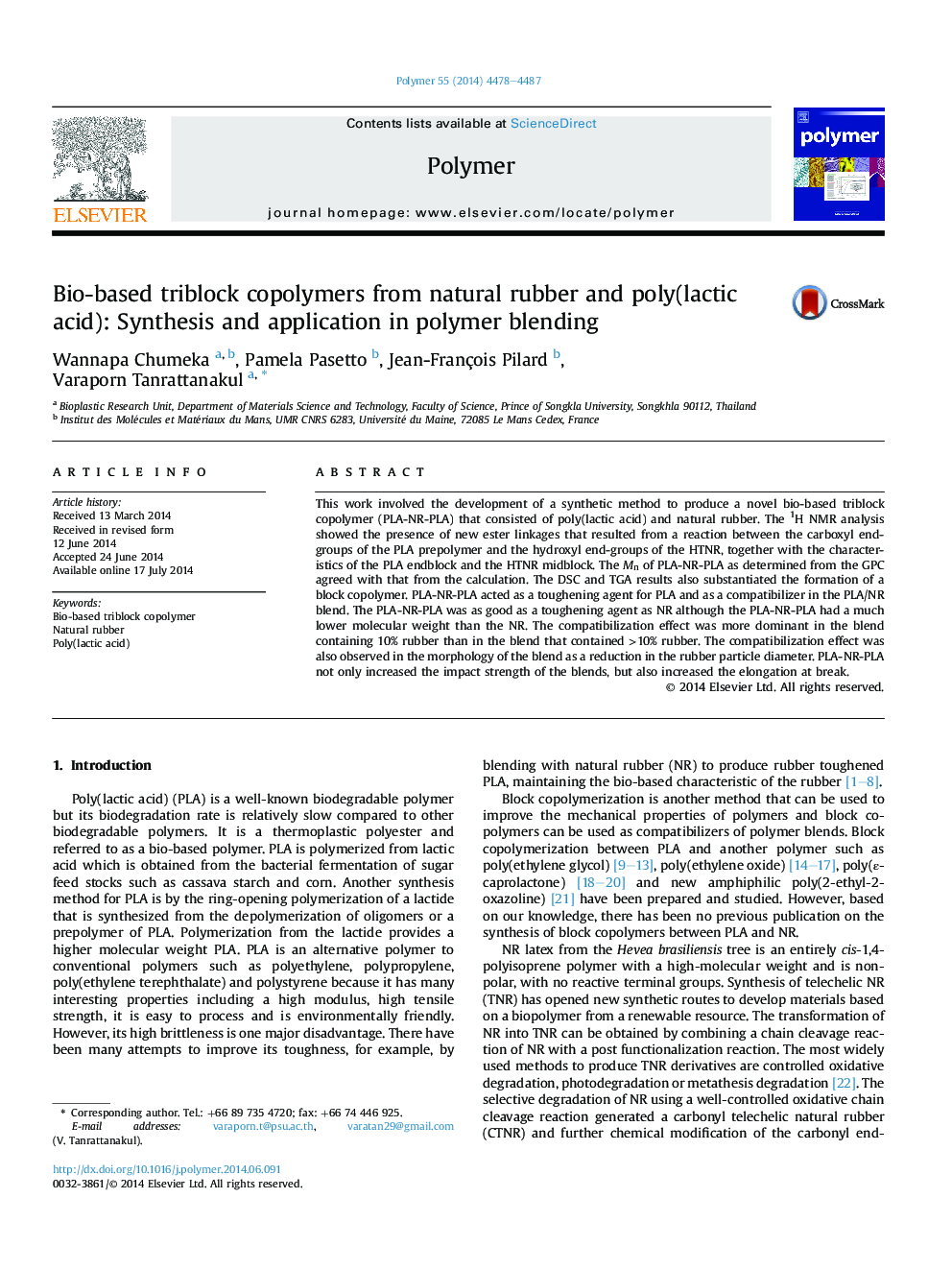| Article ID | Journal | Published Year | Pages | File Type |
|---|---|---|---|---|
| 5181088 | Polymer | 2014 | 10 Pages |
â¢New bio-based PLA-NR-PLA triblock copolymers were synthesized from poly(lactic acid) and natural rubber.â¢New ester linkages between PLA and HTNR were observed in the 1H NMR spectrum.â¢PLA and HTNR block were investigated by DSC and TGA.â¢PLA-NR-PLA triblock copolymers acted as a toughening agent for PLA and a compatibilizer of PLA/NR blends.
This work involved the development of a synthetic method to produce a novel bio-based triblock copolymer (PLA-NR-PLA) that consisted of poly(lactic acid) and natural rubber. The 1H NMR analysis showed the presence of new ester linkages that resulted from a reaction between the carboxyl end-groups of the PLA prepolymer and the hydroxyl end-groups of the HTNR, together with the characteristics of the PLA endblock and the HTNR midblock. The Mn of PLA-NR-PLA as determined from the GPC agreed with that from the calculation. The DSC and TGA results also substantiated the formation of a block copolymer. PLA-NR-PLA acted as a toughening agent for PLA and as a compatibilizer in the PLA/NR blend. The PLA-NR-PLA was as good as a toughening agent as NR although the PLA-NR-PLA had a much lower molecular weight than the NR. The compatibilization effect was more dominant in the blend containing 10% rubber than in the blend that contained >10% rubber. The compatibilization effect was also observed in the morphology of the blend as a reduction in the rubber particle diameter. PLA-NR-PLA not only increased the impact strength of the blends, but also increased the elongation at break.
Graphical abstractDownload full-size image
